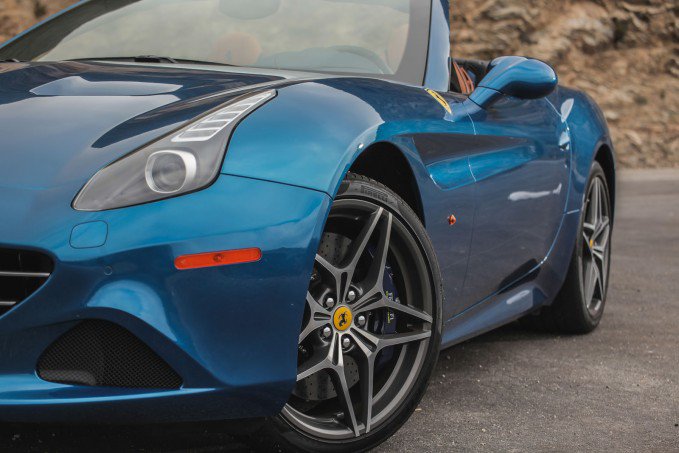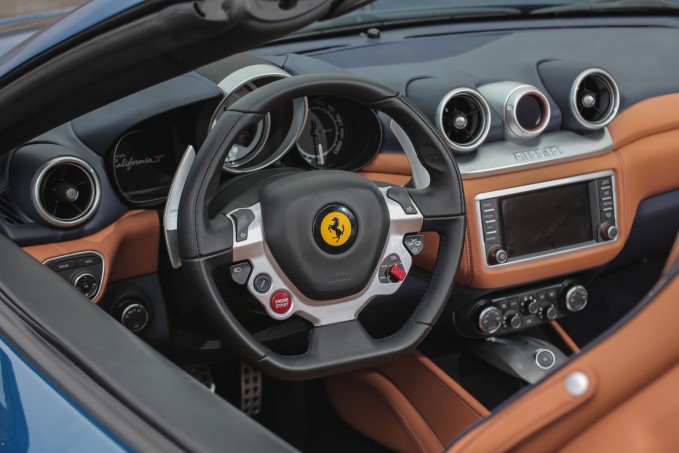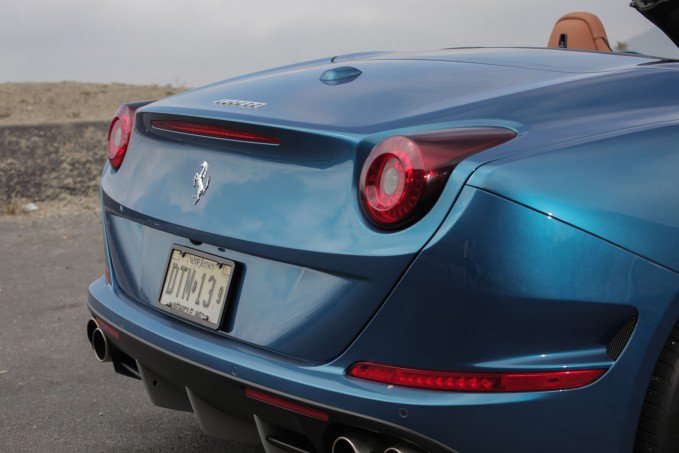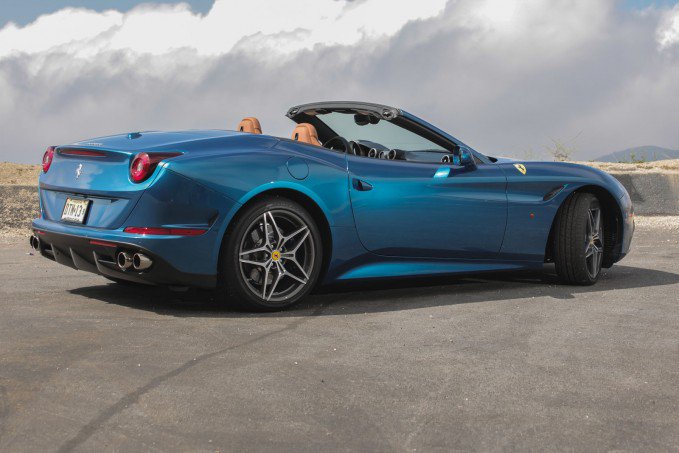Times are changing in Maranello. Ferrari is finally backpedalling this year on its decades-long dislike for turbocharging. The California, its least expensive model, is first to take the plunge.
But it won’t be the last because Ferrari plans to turbocharge all of its future V8 models and migrate its 12-cylinder cars to plug-in hybrid powertrains. All hail the mighty mile per gallon indeed…
It feels strange to type this, but when I finalized the dates for this review, I worried that it might mark my first time driving a Ferrari that I didn’t like. Yes the F40 is turbocharged, for God sakes… That’s the F40. This is, well, a California.
Except it isn’t because this is the California T. It looks fantastic and if I know anything about Ferrari, there’s really nothing to worry about.
So here are the numbers, the California T shaves two tenths of a second off the 0-60 speed of the naturally aspirated model while making 14 percent more horsepower and 50 percent more torque. Top speed is a smidgen higher at 196 MPH, which is not something I had the opportunity to test.
Instead I spent a couple of days with the Cali T on one of my favorite roads in America: the Angeles Crest Highway.
Get the Flash Player to see this player.
Swheeeeeeeeeet, ROAR!
Turbo lag is virtually imperceptible in this car, if it exists at all. The 3.9-liter V8 feeds up to 19 psi of boost pressure through the intake manifold courtesy of two twin-scroll turbochargers and you can hear a little bit of whistling while it’s doing that, but it isn’t the dominant noise.
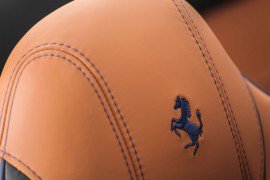
It won’t come as any surprise because – my gosh, it’s a Ferrari – but it doesn’t take any effort at all to blow way past the speed limit.
That raises an important point. Carbon ceramic brakes are standard on this car and that’s key because you want to be able to slow down without worrying about brake fade, which is exactly what these do.
Ciao, balena!
That’s good because this car has as curb weight a little north of 3,800 lbs. without accounting for the optional electromagnetic shocks Ferrari’s loaner has.
But if I didn’t know better, it would be difficult to tell. There’s loads of cornering grip, the steering is a little light but precise nonetheless and the engine has more than enough power.
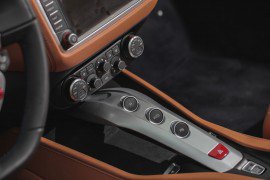
This probably goes without saying, but the downside to the California is that some people don’t take it as seriously as other cars from the brand. It’s a heavy car with an engine in the front and four seats. Well I’m here today to tell you that while those are all true, they also aren’t valid points of criticism.
Emotional Shifting
However, if I do have to find one point to pick at, it’s that the transmission can be a little rough to downshift in the manual mode. You can feel the car get a little twitchy and that’s a slight turn-off.
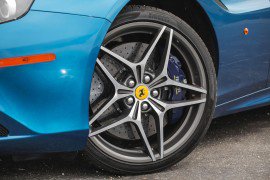
It has all-wheel steering, it’s lighter on its feet and quicker to accelerate. It also has a higher top speed and a transmission so quick and smooth that you can shift mid-corner with practically no disruption in tire grip.
But for all the Porsche’s advantages, lacks some of the intangible qualities that are responsible for people like you and me falling in love with driving in the first place.
Emotional Driving
And that’s where Ferrari has me smitten. The sounds, the steering wheel, the pure simplicity and elegance of the cabin are understated, decadent and artful all at the same time. It’s hard to quantify through a camera, but the California T, like all Ferraris, stirs certain emotions in you that few cars can.
Everything you need for driving through traffic is within reach of your fingers without taking either hand off the wheel. The turn signals, lights, wipers, paddle shifters and more are all within pointing distance.
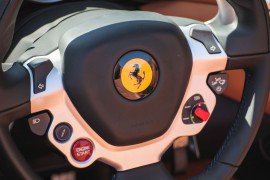
It functions exactly like your phone and offers an enhanced version of its navigation application by porting the map view to the infotainment screen while deferring your handset to turn-by-turn directions. Don’t fret if this system sounds appealing but you aren’t in range of Ferrari ownership. CarPlay is supposed to show up in a long list of affordable cars very soon. But for now, it’s a fringe benefit for rich car owners.
This car starts at around $200,000, but this one is closer to $240,000. That’s partially because of the optional magnetic suspension, but the majority of that price increase actually comes from things like customized stitching, the two-tone dashboard and painted wheels.
The Verdict – 2015 Ferrari California T Review:
And if I were in the sort of fortunate position to make a choice like that, this would be a hard car to turn away from. It feels alive and when you’re behind the wheel, so will you.







